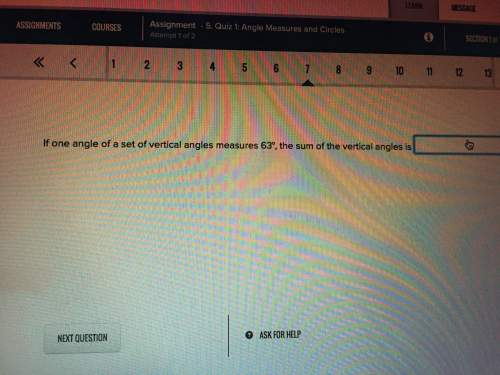
Mathematics, 28.02.2020 20:47 anthonyalvar6636
Medical case histories indicate that different illnesses may produce identical symptoms. Suppose that a particular set of symptoms, denoted H , occurs only when any one of three illnesses, I1 , I2 , or I3, occurs. Assume that the simultaneous occurrence of more that one of these illnesses is impossible and that:
P(I1) = .01, P(I2) = .005, P(I3) = .02.
The probabilities of developing the set of symptoms H , given each of these illnesses, are known to be
P (H|I1) = .90, P (H|I2) = .95, P (H|I3) = .75
Assuming that an ill person exhibits the symptoms, H, what is the probability that the person has illness I1?

Answers: 1


Another question on Mathematics

Mathematics, 21.06.2019 22:40
Aclassmate thinks that solving a system by graphing gives an exact answer when the lines appear to cross at a grid point, but only an approximate answer when they don't. explain why this isn't true.
Answers: 3

Mathematics, 21.06.2019 23:50
Use a transformation to solve the equation. w/4 = 8 can you also leave a detailed explanation on how this equation = 32
Answers: 1

Mathematics, 22.06.2019 02:40
If /is a line of symmetry, plot the partner points for the ones shown. noch 6 5 4 -3 -2 -1
Answers: 1

Mathematics, 22.06.2019 07:00
Given: m< ade = 60° and m< cdf = (3x + 15) prove: x = 15 what is the missing statement and the missing reason in step 5?
Answers: 2
You know the right answer?
Medical case histories indicate that different illnesses may produce identical symptoms. Suppose tha...
Questions






History, 22.04.2021 21:10




Mathematics, 22.04.2021 21:10

Computers and Technology, 22.04.2021 21:10

Chemistry, 22.04.2021 21:10

Mathematics, 22.04.2021 21:10

Health, 22.04.2021 21:10


Mathematics, 22.04.2021 21:10


Mathematics, 22.04.2021 21:10



 = 0.31
= 0.31


